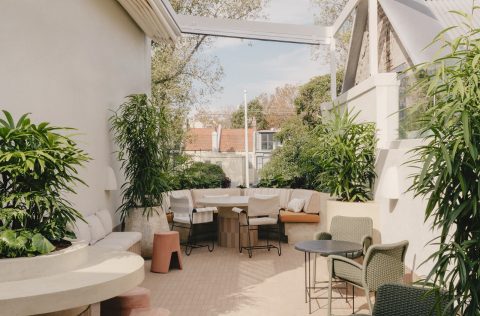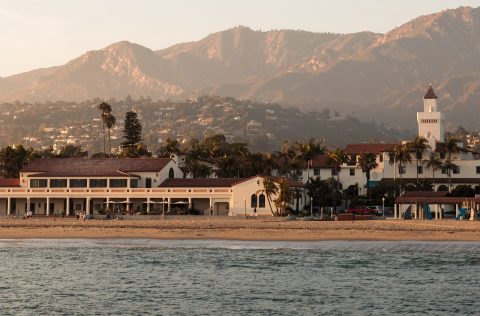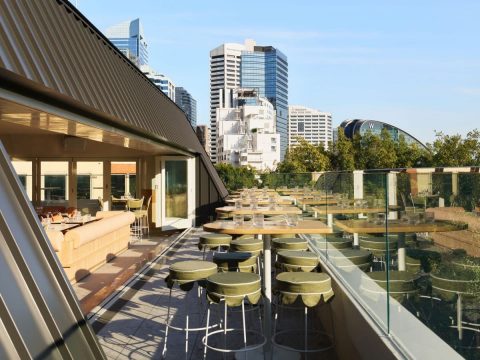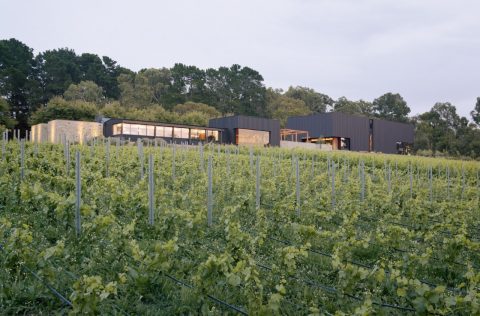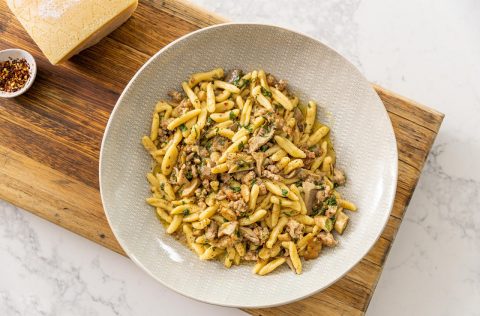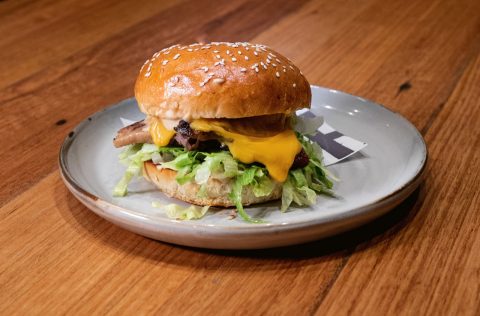The Food Trends Taking Over Australia in 2025
From Filipino-influenced menus to the resurgence of comfort food, Australia’s dining scene is expanding to new horizons in 2025. Here are the hot, happening and delicious culinary trends you'll see everywhere next year.
Image credit: Jessica Wyld
Go west for an inventive chef’s take on native flavours
1/9In Perth, chef de cuisine Brian Cole has transformed Hearth at The Ritz-Carlton into one of the city’s most exciting places to eat. The 32-year-old took over the top job in February 2023 and his signature approach – intriguing, elegant but never over-complicated, with a strong focus on local produce – has marked the restaurant as a WA dining destination. “His cooking style is unique and genuine,” says Paul Iskov from First Nations food champions Fervor. “He cares about native ingredients and the producers and suppliers we work with.”
“I have two goals I wrote down when I was 21,” says Sierra Leone-born Cole, who started cooking when he was 16. “I wanted to be the head chef at a fine-dining restaurant by 30 – and I did that. The other is to own my own restaurant by the time I’m 35. When I put my mind to something, I do it.”
Image credit: Askal
Filipino cuisine steps into the spotlight
2/9The sweet tang of banana ketchup. Soft, nutty ube (purple yam). These mainstays of Filipino cooking are two of the tastiest ways into the cuisine of the moment. At Melbourne newcomer Askal, the perfect meal must end with self-taught pastry maestro Christine Rivera’s ube cake (complete with sparkler), while the essential order at Tita Carinderia in Sydney’s Marrickville is the grilled eggplant omelette with garlic rice and a huge glug of fire-engine-red banana ketchup. Perth’s Apple Daily, in the Print Hall precinct, bills itself as pan-Asian but it’s the Filipino dishes that really hit the mark, particularly the Grand Kilawan platter: a fresh, bright mix of calamansi-marinated fish, salad and crisp rice crackers. Meanwhile, at family-run Wil’s Resto in Brisbane’s Sunnybank, glossy marinated skewers served with pancit (rice noodles) and ube puto (a fried patty) are the ultimate gateway.
Image credit: Adam Gibson
Small state, epic food scene
3/9Tasmania’s world-class food and drinks aren’t a secret anymore and there’s no slowing progress in the smallest state. This year, chef Analiese Gregory (above) is set to open a tiny 10-seater restaurant on her property in the Huon Valley. In Hobart, Kobi Ruzicka of Dier Makr and Lucinda is joining forces with the family behind veteran Cantonese restaurants Me Wah to launch Six Russell, a bakery-bistro. The Sandy Bay spot will open early for pastries, bread and épicerie items such as anchovies, cultured butter and cheese, while lunch at the bistro will be all about that enviable regional produce transformed into classic French dishes with a Tassie update. “I want to create something that’s going to be part of the fabric of Hobart,” says Ruzicka.
To take you elbow-deep into the stories behind the state’s growers and ingredients, private chef Lilly Trewartha (ex-Franklin and Garagistes) will come and cook for you during a stay at Lumière Lodge, just outside the Hobart CBD. One of her three packages, The Hobart Sunday, starts with a cruisy trip to the shops. “The farmers’ market on a Sunday is such a vibe,” she says. “We’ll pick through what’s there, have a chat with producers then head back and make a pasta or whatever works. It’s the perfect Sunday.”
Image credit: Chris Chen
Comfort food gets cosy on menus
4/9Good food makes most things better and right now, classic comfort dishes are wrapping diners in a big hug. In NSW, there’s the school-canteen vibe of the pineapple fritters at Larrie’s (above) in Newcastle and the potato scallops at Orange’s The Schoolhouse Restaurant at Union Bank. The chicken and gravy rolls at Birds of Paradise in Brunswick Heads, northern NSW, bring the nostalgia, while the riff on potato wedges and sweet chilli sauce at 20 Chapel in Marrickville, Sydney, gives ’90s student-food energy. And after a bowl of carby, eggy omurice at Melbourne’s Tokyo Motto or a handful of pillowy onigiri at Domo 39 in Sydney’s St Peters, everything feels warm and fuzzy.
Image credit: Amber Hooper
A star chef continues to shine
5/9“I’ve just been out to Coonabarabran to source emu eggs in season,” says First Nations chef Jack Brown as he prepares to join the kitchen at Berowra Waters Inn, just north of Sydney on the Hawkesbury River. Brown has come on board after his tenure at The Zin House in Mudgee, NSW, to create a First Nations-centric fine-dining menu at the prestigious water-access-only venue. “I don’t want to tell people what Australian cuisine should be,” he says. “I want to pop the question about what it could be.” At the time of writing, Brown was deep in menu planning and R&D, sourcing those emu eggs, plus local wattleseed, paperbark, fish and kangaroo. “I want us to look at the ingredients we have within reach – things that grow in the bush, things that were farmed thousands of years ago. There are also so many great producers on the Hawkesbury – there’s no better place to make the kind of food I want to make.”
Image credit: Omotenashi
Mini eateries make things personal
6/9Heavyweight hospitality groups might have venues offering everything from breakfast to bar snacks but tight menus and hyper-personalised service – often interpretations of Japanese kaiseki – have undeniable pulling power, too. Chameshi Zenka, a four-seater in West Melbourne, serves small hotpots to be shared between two. Hobart’s Omotenashi limits numbers to 10 so that owners Sophie Pope and Lachlan Colwill can keep chatting while they cook for and serve their guests. In Darlinghurst, Sydney, chef Zac Ng of Restaurant Ka believes 10 seats is the Goldilocks number for a bespoke experience. “We can focus on each detail, from the ingredients to the presentation, so every diner feels like they’re a part of something special.”
Image credit: The Victoria
Eating is elevated at this polished pub in Victoria’s High Country
7/9A regional town without a solid pub is like a schnitty without chips. In February, The Victoria reopened in Rutherglen and while head chef Brendan Anderson does serve a schnitty, it’s not as you know it. His spin comes with curried pumpkin sauce and salted pepitas, while the chips get dunked in tomato sauce from nearby Yarramanda Farm rather than the standard supermarket squeeze bottle. “I didn’t want to work at another country pub that only does the classics,” says Anderson, who moved from Melbourne where he was head chef at St Kilda’s Stokehouse Pasta & Bar. His first big change was installing a woodfired grill to give proteins that extra char; the next was designing a menu that’s clever without being flashy. If you only order one thing (besides that schnitty), make it the venison tartare and, in summer, ask for the sparkling shiraz spider.
Image credit: Dexter Kim
Cult kitchens are crossing borders
8/9Sydney has been waiting for the arrival of Melbourne- and Brisbane-based croissanterie Lune for what feels like decades. By the end of the year, its buttery dough will be rolled out in two locations – just south of the city in Rosebery and at Martin Place in the CBD. For Lune newbies, founder Kate Reid recommends starting with the classic traditional croissant and “eating it right then and there”. They’re baked ceaselessly throughout the day and are never more than 20 minutes from the oven. Or, try the Kouign Amann – a tight baked spiral of caramelised sugar and dough that hails from the French Bretagne region – which Reid says is a "sneaky staff favourite."
Lune isn’t the only eatery crossing state lines. In July, Melbourne restaurateur Andrew McConnell opened a Supernormal outpost in Brisbane and Belles Hot Chicken – recently of Melbourne and Sydney – has now landed its famous spicy chook in Adelaide.




